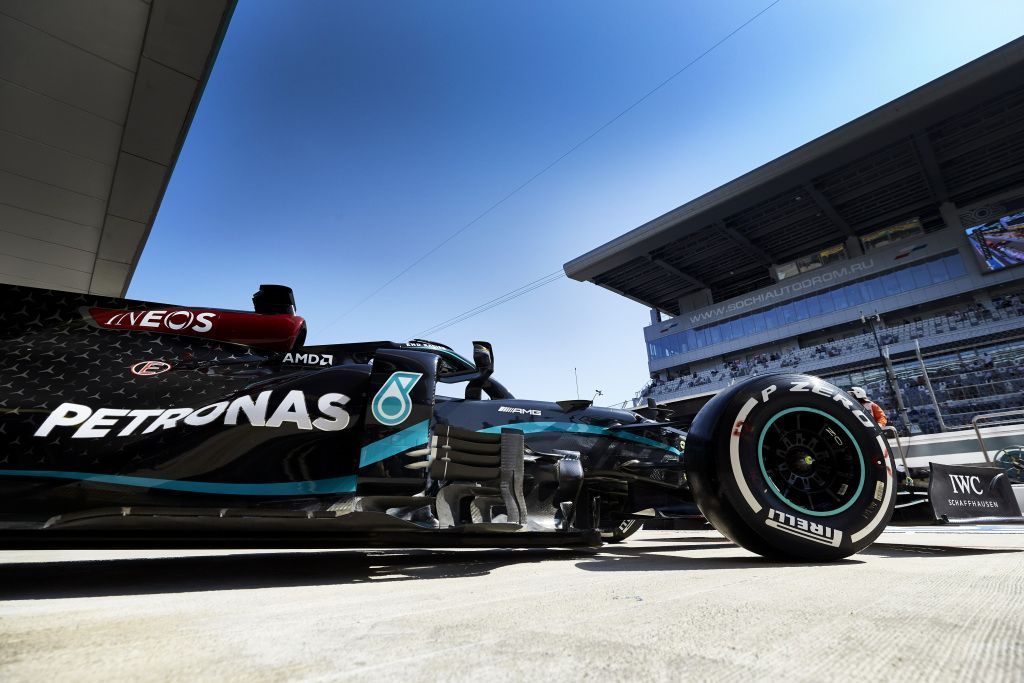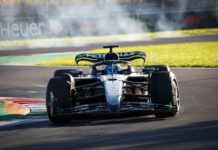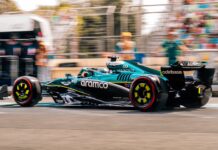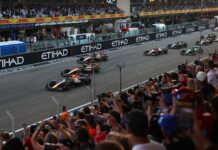Pirelli F1 chief Mario Isola reveals details of the upcoming Portimao tyre test as they push towards the 2021 season.
While not a new generation of tyre, the Pirelli product to be used in the 2021 F1 season will be a modified version of that which has been used in 2020, with a few key distinctions as the Italian tyre manufacturer strives to make a more robust rubber.
Many concepts have been produced by Pirelli, but none put to the test on-track as of yet. This is soon to change, as next year’s tyres will be tested at Portimao during the FP2 session of the inaugural F1 Portugese GP weekend.
All competitors will dedicate 30 minutes of their FP2 time to the testing of the new Pirelli tyres in a contemporary take on a full-blown F1 test – something that has become an impossibility due to COVID-19 complications.
Pirelli F1 cheif Isola explained the targets of his organisation, who hope to gather data on the tyre prototypes prior to the deadline of their submission on the first of November. “We are making the physical prototypes,” he said. “We made the initial analysis with the data coming from Brazil, and the targets are the same targets that I already told you.
“Pirelli is trying to make a tyre with better integrity – that means that we can use them at a lower pressure. This, together with the reduction in downforce that is planned for next year, is helping the tyre work in a better way than before to reduce the overheating. It cannot be a completely new product, we only have the chance to test it in Portimao. That’s a new track, and also one that was resurfaced a few days ago.
“It’s difficult, but we’ll try to supply different prototypes to different cars to collect as much information as we can and find the right tyre for next year. Portimao will be at the mid to end of October, we have to finalize the construction by the first of November, so it’s the only chance we have, and now we’re working on plans to submit to the teams,” Isola said.
Elaborating more, Isola detailed various constraints Pirelli must work within to maintain the aforementioned ‘sporting equity’ during the test, also speaking on some liberties they have been afforded thanks to a change in the rules in reaction to COVID-19. He also clarified that having three sets each doesn’t mean it will be 30 different prototypes.
“The old rule said that when we want to test a prototype, we have to supply two sets per car for FP1 and FP2,” said Isola. “They were free to use the prototype whenever they want within those sessions, and so on and so on. This year, because we decided to cancel all the tyre tests, we just decided to allocate this half an hour in FP2.
“Pirelli [also] have the freedom to supply different prototypes to different cars, to ask for different feedback and so this number can be different across all of the drivers. In any case, we have to try to work in such a way that preserves the sporting equity. We cannot give one team ten prototypes to use, and another team one, so we are trying to do this plan in a fair way, but also because it’s easier for us to collect reliable information.
“Half an hour is not easy, we are a bit worried about traffic, and many things that can happen. Maybe the circuit is not in good condition. We need to go there and see what happens. We are trying to make a plan that is the best possible with the conditions we have to respect.
“Because we have to supply more or less the same number of tyres, and we have to ask the teams to run the same number of laps, we have some constraints with sporting equity. We are planning to bring three sets of tyres per team, so 30 tyres. That doesn’t mean 30 different prototypes. [Instead], we’ll have something in the range of eight to ten prototypes to give an indication. We are still working around that,” summed up the Pirelli F1 head.
Here’s the last news from Pirelli regarding Portiamo test



















